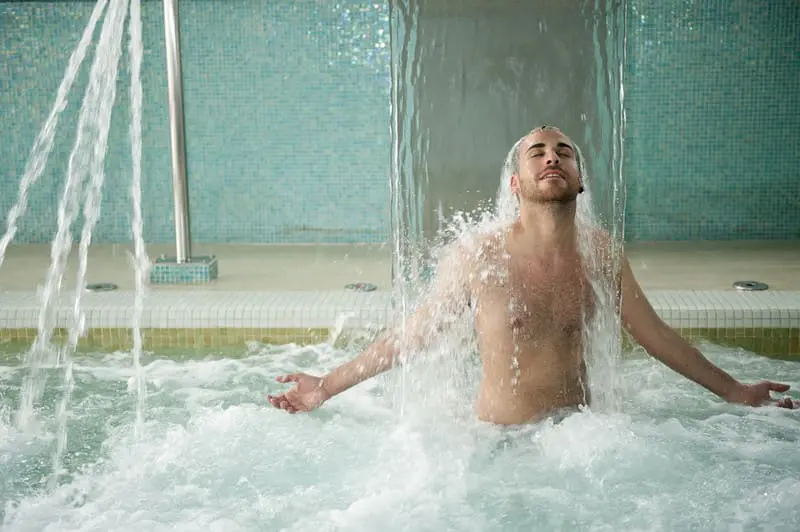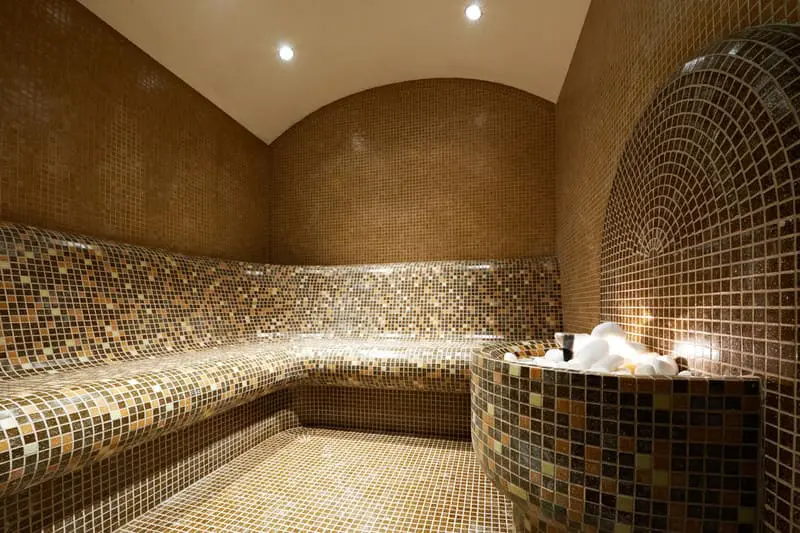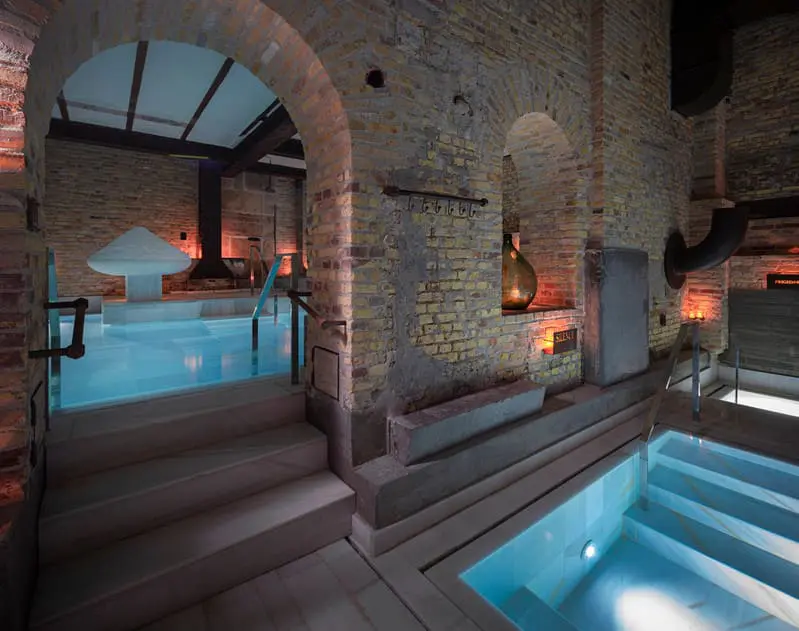Thermal spas were originally conceived as health-oriented spaces. However, the last decades have seen an evolution for some of these spaces, which have turned into recreational thermal spas. In other words, these new facilities not only incorporate elements for rest and relaxation, but also for recreation and family-oriented fun.
Dive deeper with the eBook
What is a recreational thermal spa?
A recreational thermal spa is a space that includes aquatic installations, such as swimming pools, thermal baths, saunas or steam baths, that also offer recreational elements for families, couples or groups of friends.
Recreational thermal spa: the main elements
Some of the most common installations in recreational thermal spas include:
Vitality Pool
A vitality pool, which combines water effects such as waterfalls or cervical massages, with air effects, such as hydromassage beds. These effects are typically used together in order to generate a complete, holistic experience that relaxes both body and mind.
Vitality pools offer pleasant, warm temperatures between 34-36º and present a comfortable depth of around 1,20 metres. When their diverse water and air elements are integrated, they present an incredible opportunity for relaxation and recovery. These vitality pools offer a therapeutic experience for muscular pain, skin detox and blood circulation, while also being able to soothe anxious minds.

Saunas and steam baths
A sauna is a space where users can find high temperatures that help them liberate toxins, purify their organisms and relaxing muscular tensions.
A Finnish sauna is a type of sauna that is typically dry. As opposed to other installations, such as steam baths, the interior of a Finnish sauna doesn’t include any water or abundant steam. In fact, humidity in these spaces is around 5-20% and temperature, around 80-100ºC.
On the contrary, steam baths include abundant steam and humidity inside. In this case, temperatures are typically around 40-45º C, although ambient humidity can rise up to 100%.

Contrast baths
Contrast baths consist of alternating hot and cold water baths, following pre-established protocols. In such a way, it’s possible un improve blood circulation, stimulate the autonomous nervous system and minimize potential inflammations.
Hot baths are typically at a temperature of 34º C, while cold baths’ temperatures can be around 11º C. This contrast cleans skin pores and helps relaxing muscles.

Benefits of recreational thermal spas
Some of the main benefits associated with the recreational thermal spa experience include the following:
Recreational benefits:
- Disconnection. These spaces are perfect to relax and forget about everyday worries
- Family fun. Attending a thermal spa is an excellent plan for families, as they present unique appealing both for adults and children.
- Environment interaction. Recreational thermal spas contribute to the creation of spaces where health and fun meet, creating a unity that can easily integrate in hotels, wellness clubs, recreative spaces, etc.
Health benefits
- Dermatological benefits. Water at these spaces is rich in diverse minerals, including chloride, fluoride, magnesium or calcium. These minerals provide specific benefits for atopic skin, those with psoriasis or eczema, among other types of dermatitis.
- Anti-aging effects. Thermal waters help eliminate a variety of toxins present in organism, which contribute to a rejuvenating effect.
- Cardiovascular benefits. High temperatures in water present in recreational thermal spas help increase hydrostatic pressure and blood circulation and, as a result, also increase tissue oxygenation.
- Digestive benefits. Tissue oxygenation reduces gastrointestinal inconveniences, as a higher oxygenation also means these are better nourished. Thus, metabolisms are reactivated, which in turn facilitates a better digestive and liver functioning.
It’s more and more common to find recreational thermal spas that are targeted for all types of audiences. Some of the most common include:
- Leisure pools: they are usually indoors, although some infrastructures allow for indoor installations.
- Jacuzzis: these are small-sized pools that include bubbles and hydromassage options that bring both relaxation and fun for every member of the family.
- Contrast baths: a space that contributes to the whole body’s strengthening.
- Saunas and steam baths: a perfect option for muscle relaxation
- Emotional showers: different suggestions that stimulate both mind and body.
- Children swimming pools with water jets: these water installations incorporate elements to facilitate play and interaction between children.
- Dry sauna for kids: these installations don’t reach such high temperatures as the adult versions, and typically present ambient temperatures.
- Children playgrounds: a recreational space designed specifically for kids.
- Restaurants: which can offer healthy and fun food as the perfect ending for the day.
Many of these spaces include other recreational elements that are not related to water installations, such as psychomotricity circuits. This ensures children enjoy a fun, memorable day.
A recreational thermal spa is thus the perfect option both from a health and fun perspective, as well as being a recreational activity that adjusts to different audiences and their needs, from couples to groups of friends and families and small children.
